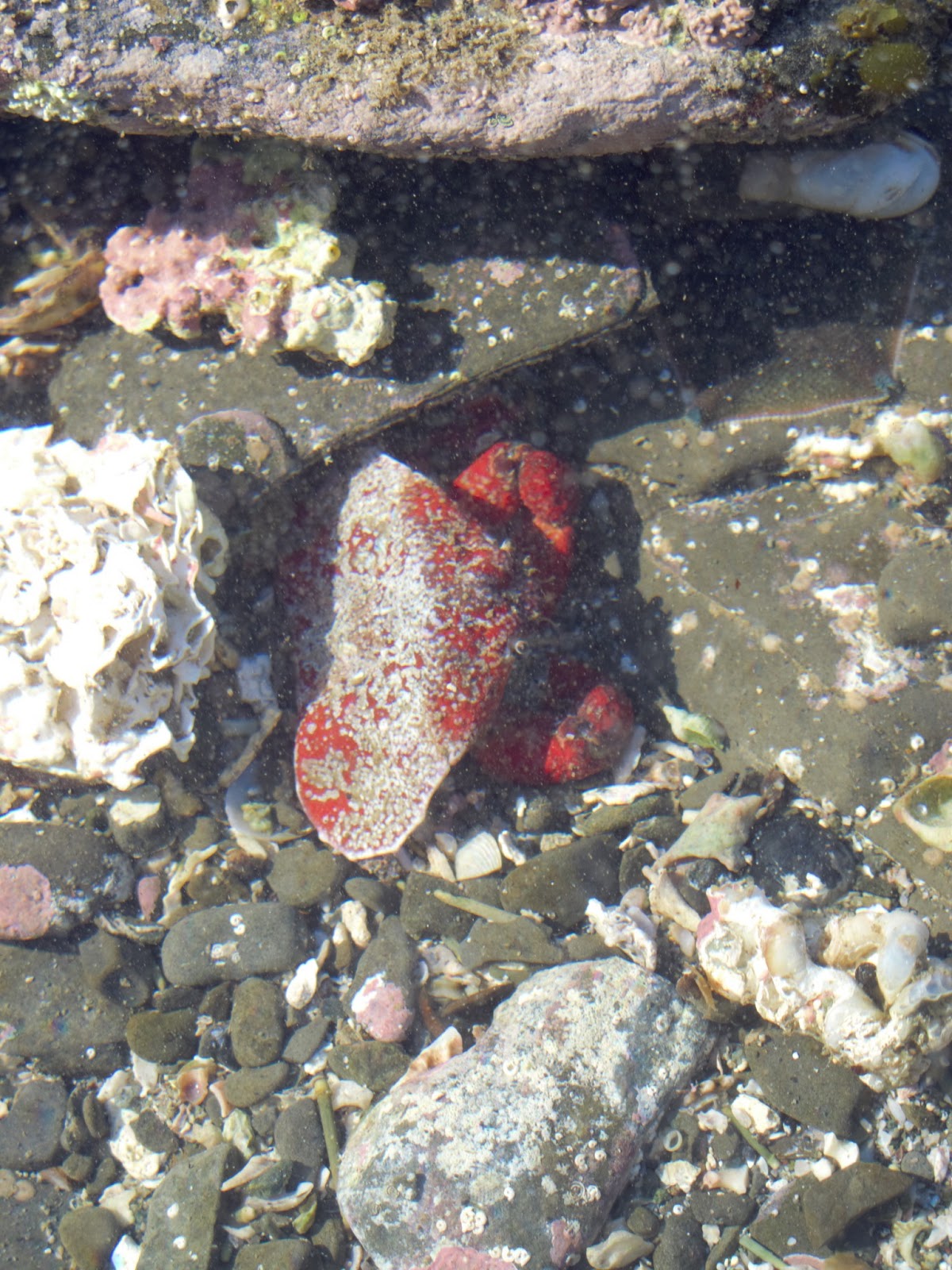The side containing the bedrock cliffs tends to be less exciting on low tides than the other. Aside from the occasional pool, so choked full of algae you can barely see anything, there is not many places above water for life to hide from the ever present and abundant seabirds. What life is here is bored into the rock face, making it difficult for many predators to snatch them up. Most of the life appears to be in the macroalgae below water. Hopefully with some new dive gear soon, I will be exploring this world as well.
Some visual proof I am here by the way. I will try to smile more when I am not thinking that it is a bad idea to set the camera on a wet rock. Anyway, the other side of the beach is far more interesting from an intertidal point of view. There are numerous deep pools and loose cobbles and boulders that creatures can hide in. The depth of the pools is also shallow enough that rubber boots are generally all that is needed, though I spent the first three weeks in my hiking boots, jumping from one exposed bedrock patch to another. When you first enter the area there are signs of life immediately, with rock oysters, black nerites (snails), and large limpets (bigger than a toonie).
Another crab I found high up on the shore was this black-fingered crab (very original) who was not happy to have his rock removed from him. His favorite prey, the black nerites are very abundant in the high area as you can see behind him, all over the rocks.
As I ventured farther from the shore, the assemblage of creatures underneath and clinging to the bottom of the rocks became increasingly more diverse. Two of my favorites are this violet chiton, whose velvety mantle wraps up over the shelled valves that protect the main body. The other is the aptly named painted prawn, who sometimes refused to acknowledge that their roof had been lifted.
There are a large number of seastars here and can often be found under rocks as well. The cushion star is often firmly attached to the bottom of the rock (see below) but on the bedrock, there are such interesting finds as the beautiful gray and brown 11 armed seastar and the mottled brittle star. There are numerous types of brittle stars, but they are photosensitive and upon exposure to light, they quickly drag themselves under rocks and into crevices. I was lucky to get this shot at all!
By far the one that took me by surprise was this black fellow, the shield limpet. He was not feeling photogenic that day and refused to get in an angle that did not allow any glare, so I apologize for the bad picture. Unlike the conventional limpet, the mantle covers the entire animal and they stay in the water rather than pressing their shell (obviously impossible) against rocks to form a water tight seal, preventing them from drying out at low tide.
Last week I discovered another crab species (I believe bringing my total up to about 8) which is barely even in the intertidal. While wondering farther down the shore, there is an area with large bedrock outcrops that rise above the tide line. In the damp crevices of these rocks hides a semi-terrestrial species that is exposed to air for almost half the day! The purple clawed shore crab wedges itself as deep into the rock as possible to keep it from being plucked out by the abundant shorebirds. Sure enough, after traveling all over the rocky outcrops, if their was a moist crevice deep enough in the bedrock, there were numerous crabs hiding till it is safe to venture out and forage.
I know I spend a lot of time talking about crabs, but lets face the truth, it doesn't surprise anyone. My favorite crab so far has to be the triangle crab. Often times I would almost miss spotting these guys when I flipped rocks, but they always seem to start moving out of the sand the moment I start to put the rock back down. They look basically like a rock from above, tucking their legs and claws underneath. This male also did not want to get into the right angle for a shot so I had to pick him up so you could get a good look at him.
So there you have a little tour of the intertidal here at Goat Island Marine Reserve. I will leave you all with probably my favorite picture so far, of two cushion stars sitting underwater as the water from one pool cascades over them on its journey to find the retreating ocean. (If you can't see them, one is in the middle, and the other is less obvious to it's right)



















No comments:
Post a Comment